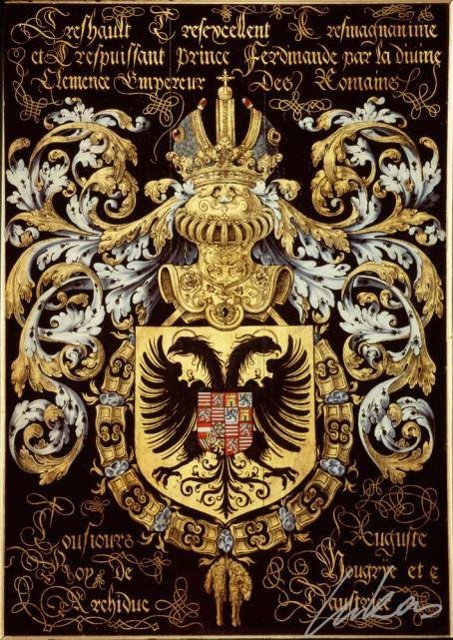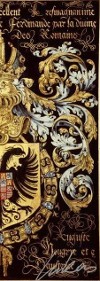
|
The Official Name of the Holy Roman Empire The word imperium appears in official documents of Otto I, but it denotes the imperial power, not the territory. After Henry II's death some Italian magnates offered the crown of Italy to the son of the duke of Aquitaine, and swore to help him acquire the "imperium" of the Romans; here, the word meant the title itself. One has to wait until Conrad II to find Romanum imperium used to designate the lands ruled by the emperor (documents of 1034 and 1038). Curiously, the expression Romana res publica is used with the same meaning contemporaneously. The use of the phrase Romanum imperium remains rare under Henry II (in 1049, 1053) and successors until Frederic I. It is however, occasionally used in non-official documents, such as letters, chronicles, even Papal encyclicals (in 1076).
At the same time, one finds the expression Romanum regnum (Roman realm) in an official document of 1041. In 1045, the signature of the emperor is described as signum regis invictissimi Henrici tertii, Burgundiorum primi, Romanorum secundi. Correspondingly, the title Rex Romanorum makes its apparition in 1040, and is officially adopted in the Intitulatio in 1041 and in the monogram in 1043. The use of Romanum imperium becomes considerably more frequent under Frederic I Barbarossa (in 1152, 1155, 1157-9, 1162), In 1157, one finds a concurrent use of sacrum imperium et diva res publica (holy empire and holy commonwealth). The phrase sacrum imperium is found again in 1161, 1164, 1174, 1184-6. In 1159, one finds sacratissimum imperium, a phrase occasionally encountered until Otto IV.
The two expressions Romanum imperium and sacrum imperium are used concurrently in official documents for a century, but one does not find the two together until 1254: sacrum Romanum imperium. From that date, the new phrase never falls out of use although the shorter formulas continue to be used commonly. Official documents in the German language show the phrase heiliges Reich or Römisches Reich frequently in documents of Ludwig of Bavaria, but heiliges Römisches Reich is rare; it first appears in 1340. It becomes common with Charles IV (1347).
The last transformation of the official name of the Empire took place in the late 15th c. A Reformation issued at the Reichstag of Frankfurt in 1442 speaks of dem heiligen Römischen Reich und Deutschen Landern. A similar phrase appears at the Reichstag of 1471: des heiligen Römischen Reichs und der widrigen Teutschen Nation (in Latin: sacri Romani imperii ac celeberrimae nationis Germanicae), and in the Landsfriede of Nürnberg of 1487: dem heiligen Reiche und deutscher Nation, the Landsfriede of 1486: das Römische Reich Teutscher Nation, the Worms diet of 1497: das heilige Reich Teutscher Nation, and the Köln diet of 1512: des heiligen Römischen Reichs Teutscher Nation. The phrase entered the Wahlkapitulation of 1519, by which the emperor promised to reside within dem heiligen Römischen Reiche Teutscher Nation.
From the late 16th c. to the 18th c. jurists debated the meaning of the phrase. Other early 16th c. documents suggest that it originally may have meant the German part of the Empire, with deutsche Nation in opposition to fremde Nation. Interestingly, the debate in the 17th c. was whether the phrase meant that Germany happened to be an empire, or whether the Empire happened to be located mainly in Germany. Increasingly, jurists and writers used the phrase imperium Romano-Germanicum. Significantly, the final acts of the Holy Roman Empire, namely the Reichsdeputationshauptschluß of 1803, the note of the French ambassador of August 1, 1806 and the abdication of Francis II, all use the phrase Deutsches Reich (confederation germanique) rather than the formal title.
|






